How Fuel Friendly Is the 2017 Kia Niro?

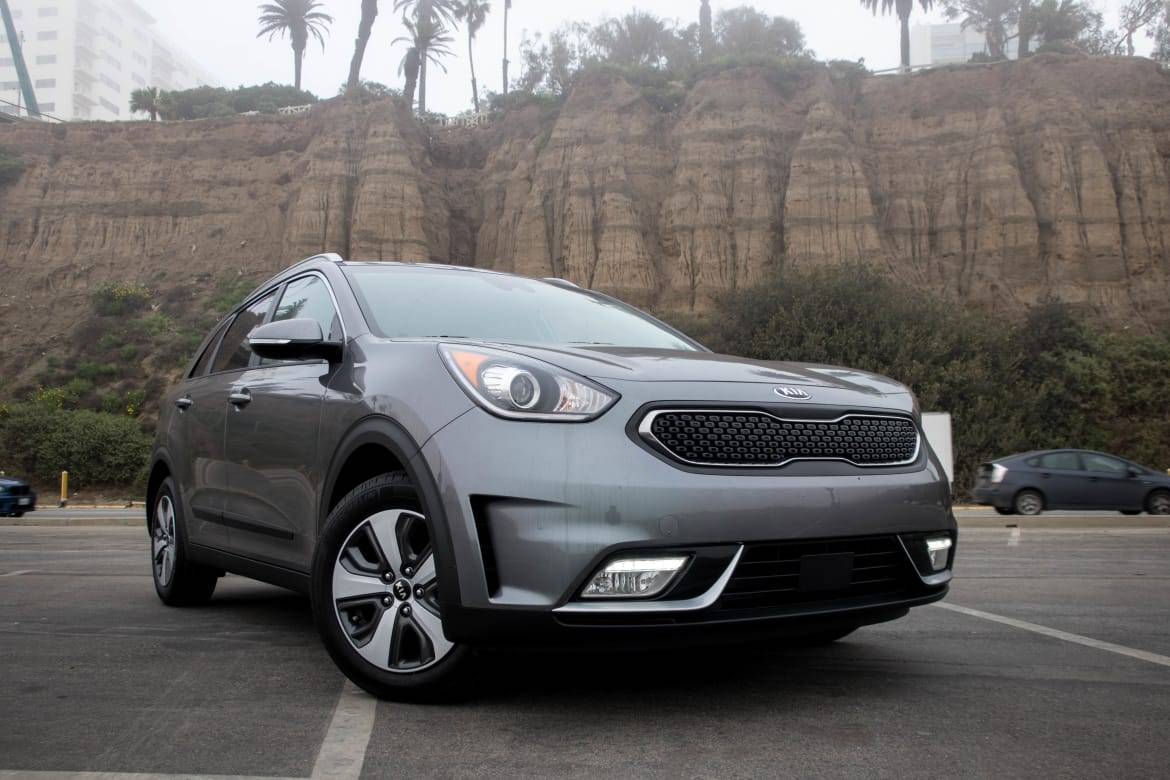
CARS.COM — Kia is fond of calling the 2017 Niro the “un-hybrid” based on the way it drives and looks. It’s also a not-so-subtle shot at the reigning eco hybrid king, the Toyota Prius, which wears its funky styling like a badge of honor. Semantics aside, if the Kia Niro wants to compete with the Prius and other hybrids, then it must put up or shut up when it comes to fuel economy. To find out how it stacks up in terms of fuel friendliness, I put the new Kia Niro to the test on a round-trip drive from Los Angeles to San Diego.
Related: Melissa McCarthy Is Eco-Warrior in Kia Niro Super Bowl Ad
The Niro hybrid is part of a new wave of electrified hybrid, plug-in hybrid and battery electric vehicles from Kia and Hyundai that aim to challenge the Prius’ eco supremacy. Fun fact: The Kia Niro hatchback and all three varieties of the Hyundai Ioniq sedans (hybrid, plug-in hybrid and electric) are built on the same platform, and the Kia Niro hybrid and Hyundai Ioniq hybrid version have identical drivetrains. The Niro is a hybrid alternative with similar room and cargo space to its gasoline Kia Soul and electric Soul EV hatchback crossover models.
Kia offers the Niro subcompact hatchback crossover in four trims: FE, LX, EX and Touring. Like several other hybrids, the Niro gets better gas-mileage ratings in the city than on the highway, where the electric motor and battery can have more impact and keep the engine off. Strangely, there’s a fairly large gap in fuel economy between trim levels. Niro FE models get an EPA-estimated 52/49/50 mpg city/highway/combined, while the LX and EX return 51/46/49 mpg. The Kia Niro Touring is far behind those two in fuel efficiency, with estimated fuel-economy ratings of 46/40/43 mpg — nearly 15 percent worse than the other trim levels. I asked Kia why, and a spokesperson cited the trim’s “113 pounds of added weight from additional features and equipment, as well as larger wheels with a wider tread than FE and EX models.” For the record, the 2017 Prius shows an EPA-rated gas mileage of 54/50/52 mpg.
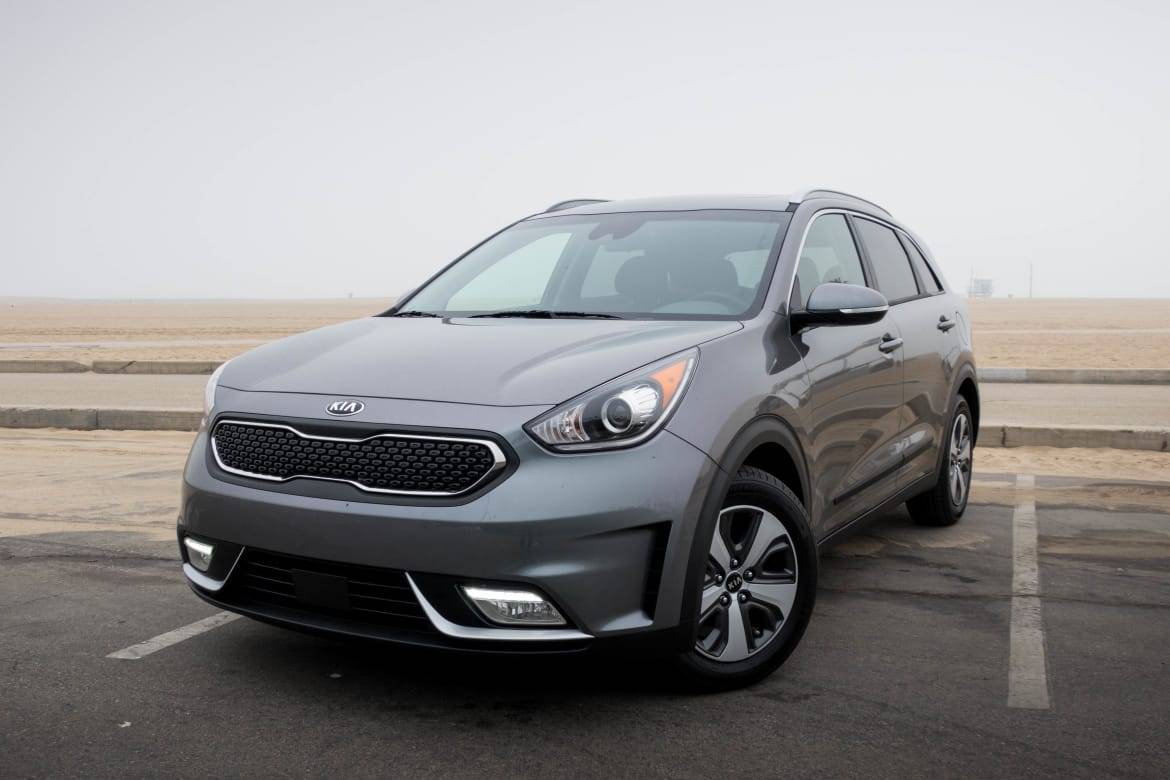
My test vehicle was a Niro EX, which added the Sunroof and Advanced Technology Package ($2,300) for a final sticker price of $28,895 including destination. There’s a lot to like about the Niro; it’s comfortable, has plenty of interior space and cargo room, and it is well equipped for the price. With its six-speed dual-clutch automatic transmission instead of a continuously variable transmission, the driving experience also will be more familiar to car shoppers — it behaves pretty much like a normal car. There’s some throttle sluggishness, however, especially when driving in Eco mode. A Tracy Chapman song about the Niro wouldn’t be titled “Fast Car,” it’d be more like “Slow-to-Middling-Speed Car.” But at the end of my week with it, I found myself pretty enamored.
However, the ultimate test for the Niro — as it is for all hybrids — is how it stacks up on real-world fuel economy. So how did that go?
Fuel-Economy Results
In total, I put 307.1 miles on the Kia Niro, with about 250 of those miles on the highway; approximately 60 of those highway miles came in stop-and-go traffic (because LA).
Refilling the Niro took 6.703 gallons, which left me with an observed combined fuel economy of 45.8 mpg. That’s worse than the EPA combined estimate of 49 mpg, which was to be expected given the amount of highway driving I did. But it was also worse fuel use than the straight highway estimate and that causes some concern. My measured fuel number also fell short of the 46.2 mpg figure shown on the car’s computer.
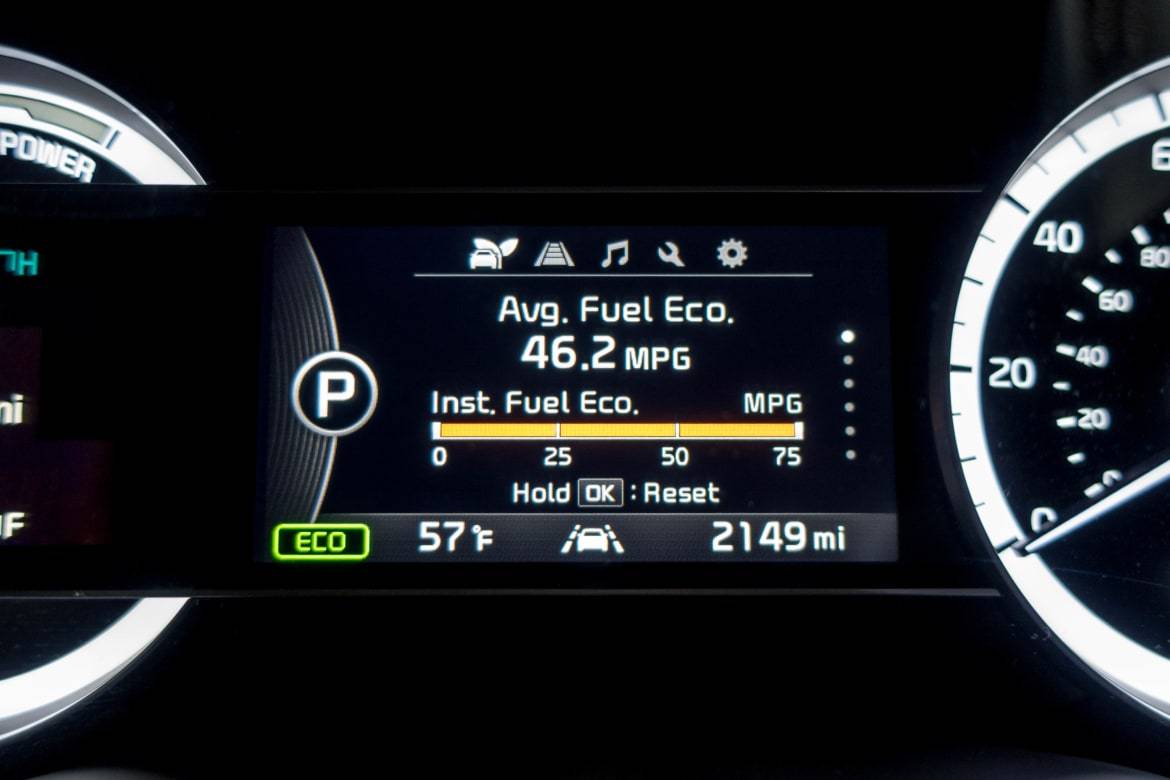
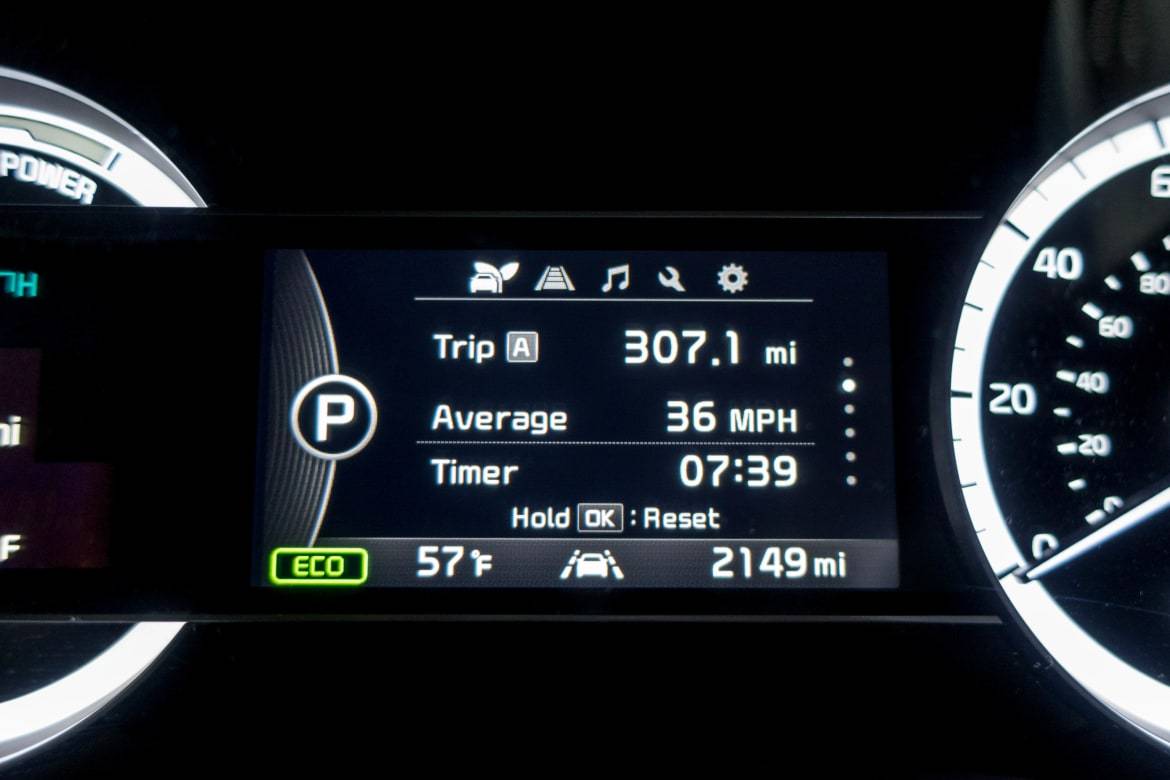
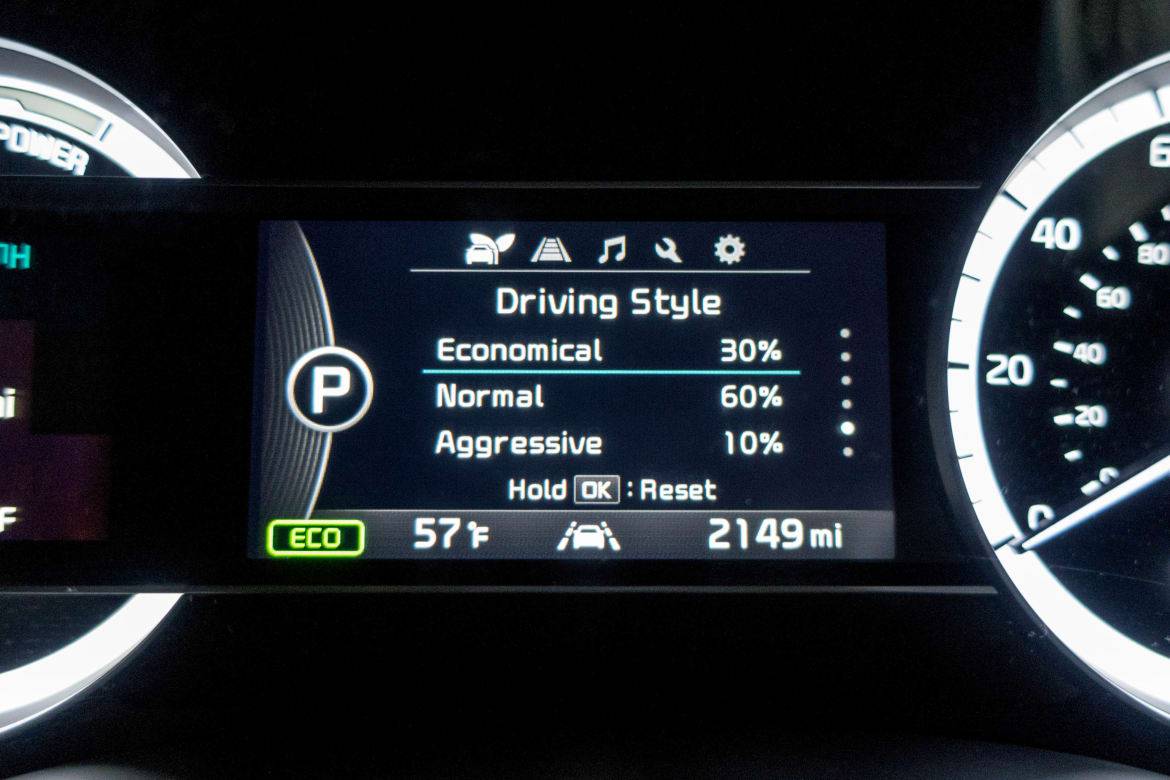
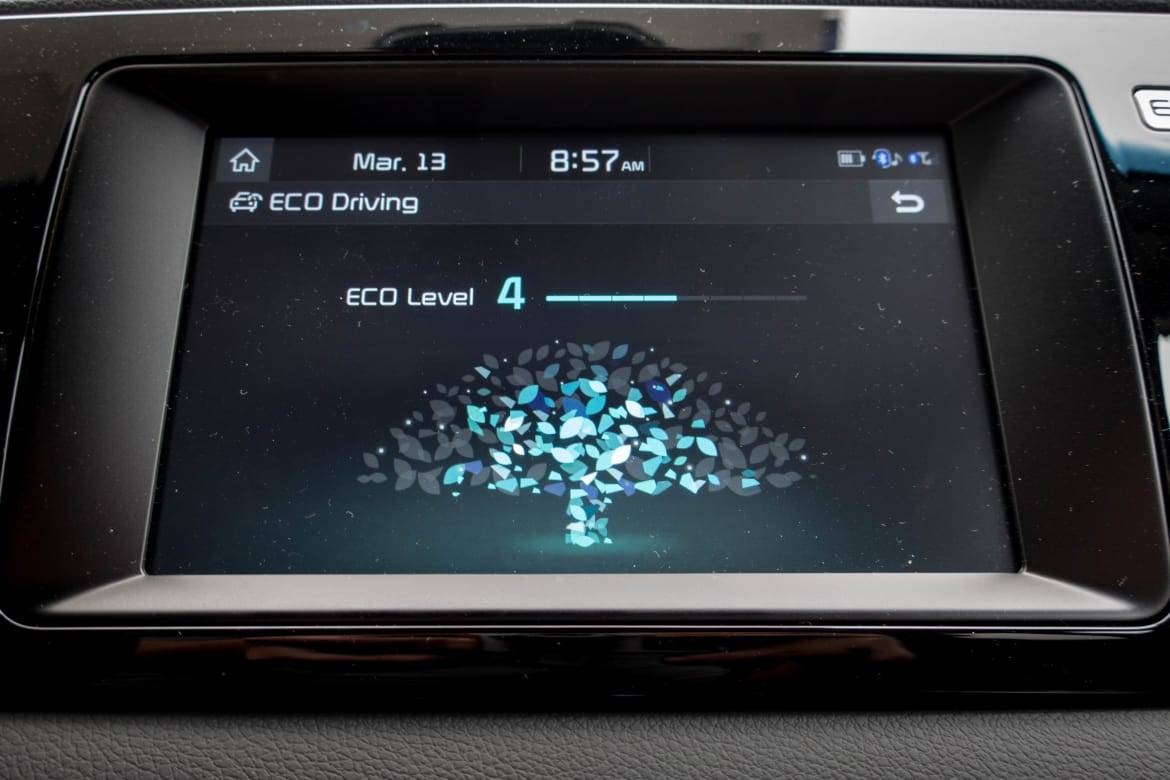




The Kia Niro also has a few eco-inspired tools that help keep track of how efficiently you’re driving. A tree in the multimedia screen gets more filled out the more economically you drive, but the more interesting one is a calculator that keeps track of how much time is spent driving in three different styles. Over the course of my test, my driving style was “economical” 30 percent of the time, “normal” 60 percent and “aggressive” 10 percent.
How We Tested
The Niro defaults to Eco mode when you turn it on, so that’s how I left it. I purposely did not use the adaptive cruise control and drove with the windows up and air conditioning on the entire time for consistency. Highway cruising speeds were in the 70-75-mph range, unless stuck in traffic, upon which the speed varied between that and the 10-rip-your-hair-out-mph range. The tires were inflated to the manufacturer’s posted specifications.
Editor’s note: This story was updated on March 22 to correct the mileage figure recorded by the Niro’s trip computer.
Cars.com’s Editorial department is your source for automotive news and reviews. In line with Cars.com’s long-standing ethics policy, editors and reviewers don’t accept gifts or free trips from automakers. The Editorial department is independent of Cars.com’s advertising, sales and sponsored content departments.

Former L.A. Bureau Chief Brian Wong is a California native with a soft spot for convertibles and free parking.
Featured stories








